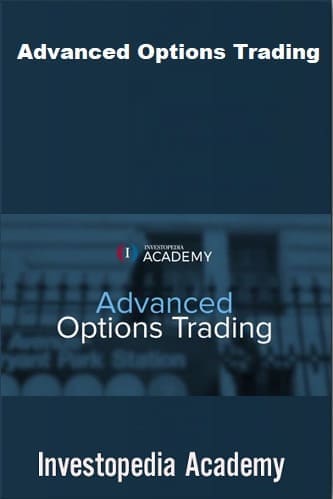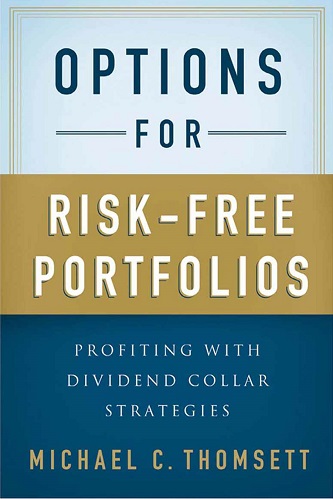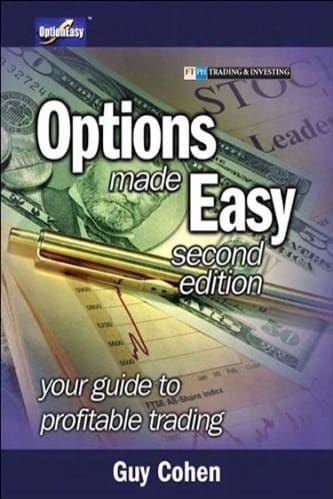Articles
Using The Emini S&P 500 To Trade Options By Tom Busby
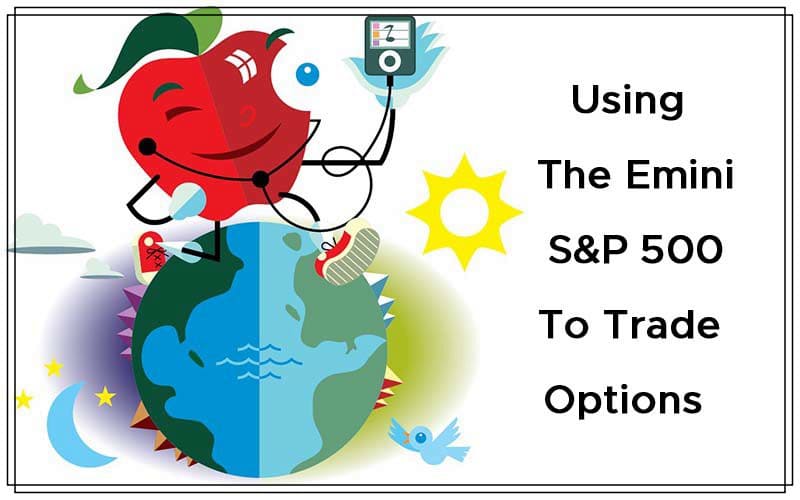
Here’s a technique one veteran S&P futures trader uses to trade options. I rarely come across a trader who has not traded options at one time or another. Option strategies come in many shapes and forms, but they are all intended to do one thing: make money. I’ve been trading since 1980 and was at one time one of the largest option traders in the brokerage industry until the crash of 1987, which made me realize that holding a leveraged position overnight could be devastating. Though I still trade options, I have a totally different perspective on how and when to trade them. First of all, I am an S&P futures trader. I have been trading and following the S&P futures since they began trading in 1982. So I have learned to trade options based on the one thing I know best, the Standard & Poor’s 500 futures.
The S&P 500 futures contracts of the 1980s were very different from those we know today. Because of the boom in technology over the past 15 years, most of the trading done now is electronic, as opposed to the way we used to trade, by picking up the phone and calling a broker or the pit. Not only that, the economy today is now global instead of being These factors have led the trading industry to look at the markets in a broader perspective about how our markets will react with what happens in Europe or Asia. Further, the markets are becoming 24-hour venues instead of the standard 8:30 am–3:00 pm US Central time. Since the markets are now on a 24-hour basis, we can see how the world values our markets and we get a better understanding on how our markets will perform based on how the world has traded.
A Typical Trading Day
I start my trading day early (5:00 am CT) to get the direction of the markets going through Europe and coming into the US open. The e-mini S&P futures is the choice of S&P futures traders on this day, because it is always electronic and trades virtually 24 hours a day. The direction that the e-mini is trading gives signals to how the US markets will open. Though equity options cannot be traded until after 8:30 am, I can start setting up my trading strategy based on what the e-mini has done throughout the night.
Most stocks (around 70%) move in the same direction as the e-mini. Since I am aware of this, by the time the US opens at 8:30 am, I know whether the majority of stocks will open down or up based on what the e-mini has done throughout the night. Once the US market opens, the US gets to “vote” on the direction of the world markets. Because of this, I like to give the market one hour before entering into an option trade. This gives the US market some time to digest what the world markets have done and any economic news that has been announced. Looking at Figure 1, you can see the direction of the world markets and how it affects the US.
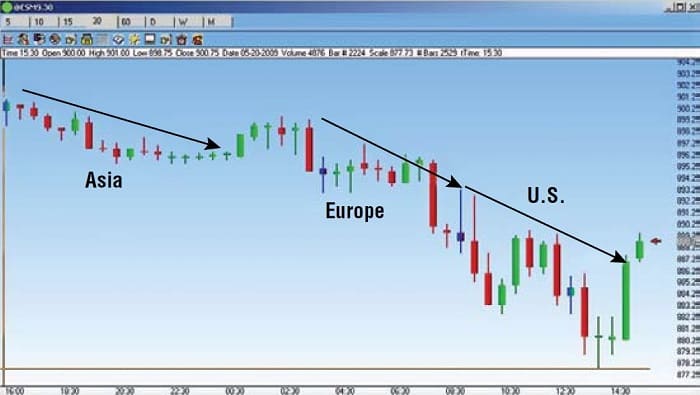
FIGURE 1: DIRECTION OF GLOBAL MARKETS. The overall direction of the global markets gives you some clues as to how the US markets will perform.
To trade options, I use a basic strategy. If the market is going up, I buy calls or sell puts. If the market is going down, I sell calls or buy puts. I prefer to sell options rather than buy them. However, some equities move well enough in a day that buying the option pays better than selling the option and waiting for it to deteriorate.

FIGURE 2: AAPL VS. THE EMINI. Here you see a chart of Apple (AAPL) vs. the e-mini. Note that the stock tracks very well with the e-mini.
Apple Inc. [AApl] is a good example. Apple is one of the stocks that track very well with the e-mini. Figure 2 shows a daily chart of AApl and the e-mini (@ESM9). Though stocks have individual news and can move more (or less) at times, they will generally trend with the e-mini. As stated, I like to give the market the first hour of trading to get the noise out. Then I look at where the e-mini is trading based on its open (up or down) and the overall direction of the market for the day, and see if Apple is trading in the same direction. If so, I will buy an at-the-money or first-strike out-of-the-money call if heading higher, or put if heading lower. Then I give the market 30 minutes to see if the direction I traded is right.
Suggested Books and Courses About Trading Options
If the direction is what I thought it would be, I place a stop at half of the value I paid for the option; if I bought the option for $5.00, I place a stop at $2.50. If the market has turned and I am not getting paid, I will get out of the position and look for another opportunity later. If the trade is going in my direction, then I will reevaluate it at 1:00 pm. If the market reverses, I get out. If the market continues in my direction, I stay with the trade and move my stop just to the other side of the open by about 10 cents and then look to reevaluate the trade at 2:30 pm before the market closes. Figure 3 shows AApl and the emini on May 26, 2009.
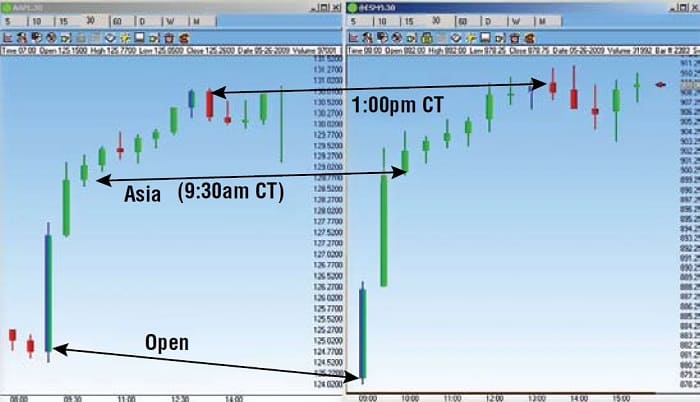
FIGURE 3: AAPL AND EMINI (MAY 26, 2009). The e-mini started higher and continued the trend going into 9:30 am CT. Apple was following the trend and was trading around $128–129 at 9:30 am CT. The closest strike would have you buying the June 130 call on AAPL.
The emini started higher and continued the trend going into 9:30 am. Apple was following the trend and trading around $128–129 at 9:30 am. The closest strike would have you buying the June 130 call on AApl. Figure 4 is the Apple June 130 call (Apv FF) that you could have entered around $4.20–4.30. At 10:00 am, it was trading at $4.35 and holding up.
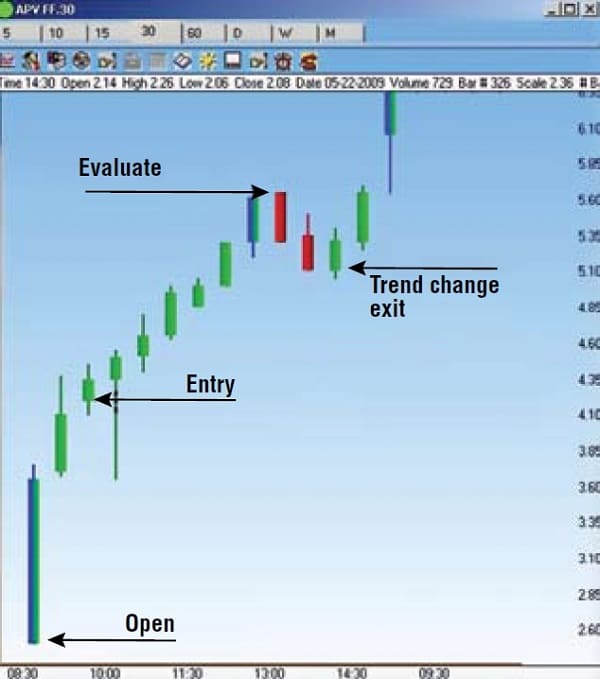
FIGURE 4: AAPL JUNE 130 CALL (APV FF). You could have entered this trade around $4.20–4.30. At 10:00 am CT it was trading at $4.35. At this time, I would put a protective stop at $2.10 and reevaluate it at 1:00 pm CT. At 1:00 pm CT the call was trading at $5.65 and I adjusted the stop to $2.40 (10 cents below the open of $2.50) and waited to see where it was at 2:30 pm CT. The market had pulled back, and the call was at $5.10, which was 55 cents below where it was at 1:00 pm CT, so I would have exited the trade at that time with an 80-cent profit.
At this time, you would place a protective stop at $2.10 and reevaluate it at 1:00 pm. At 1:00 pm the call was trading at $5.65 and you would adjust the stop to $2.40 (10 cents below the open of $2.50) and wait to see where it was at 2:30 pm. The market had pulled back, and the call was at $5.10, which was 55 cents below where it was at 1:00 pm, so you would exit the trade at that time with an 80-cent profit.
Increasing Your Odds
This is just one example of a stock that can be traded through-out the day. If I can’t get into a trade at 9:30 am, I will look to enter after 1:00 pm and follow the same procedure going into the close. Using the direction of the futures to get the trend shifts the odds in your favor of getting paid. There are many stocks out there. Just verify that they trend with the e-mini before using them this way.

